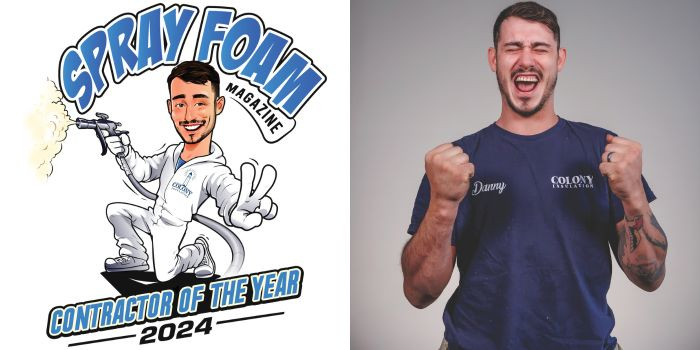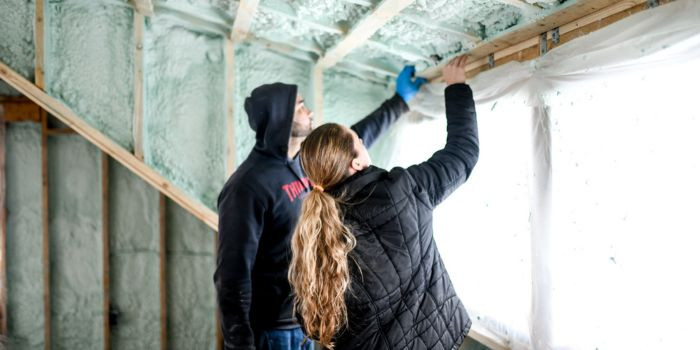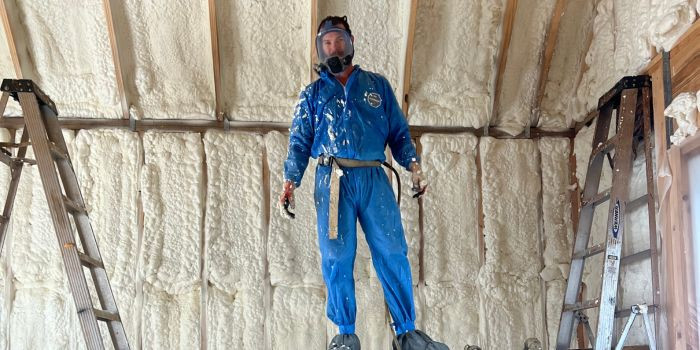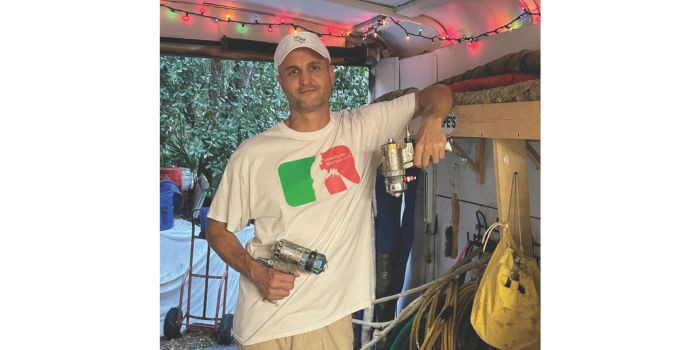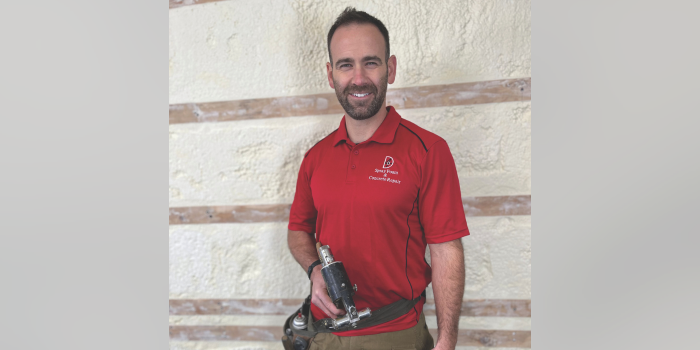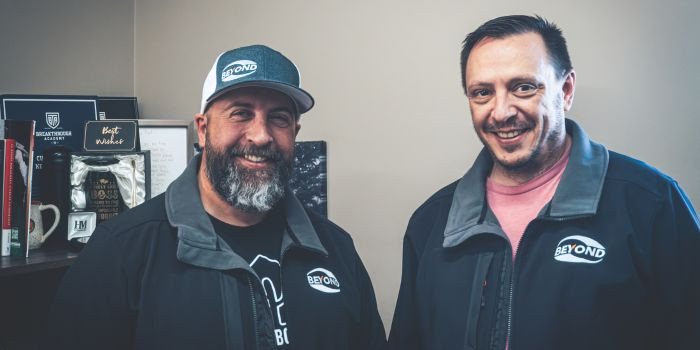Keeping Cool on the Mississippi


SPRAY FOAM MAGAZINE – The Spray Foam Magazine team was fascinated to find out why and how spray foam was applied to two, massive 2.5-million-gallon anhydrous ammonia tanks mounted inside a barge to transport liquified anhydrous ammonia. We caught up with the owner of AirTight Spray Foam of Mississippi, LLC, Jeremy Himmel to find out more.
Launched in 2007, AirTight Spray Foam of Mississippi, specializes in polyurethane spray foam insulation systems. They were contacted by Randy Gilchrist, the River Operations Shipyard Coordinator with Southern Devall, a premier maritime services company that specializes in transporting chemicals and liquid fertilizers along the nation’s waterways.
Gilchrist required the two tanks of anhydrous ammonia to be transported up and down the Mississippi River from city to city and port to port. They supply ammonia in mostly fertilizer applications, although it’s also used partially in refrigeration and some medicinal uses. The SPF application is required so that the sun doesn’t heat the tanks during transportation causing product loss. If the material gets too warm, valves automatically open letting the ammonia out causing product loss and a potential hazard to anyone nearby.
Anhydrous ammonia has a strong affinity for water and the word anhydrous is even Greek for “without water.” It also requires considerable amounts of water to counteract its burning effects on contact with any moist areas of the body like eyes, ears, nose, throat, bronchia, and lungs. Skin that is chemically burned by ammonia is destroyed and is not capable of healing or replacing itself. Damaged tissue must be surgically removed so healing can ensue. The results can often be disfiguring. It is therefore imperative that anyone working with or near such a chemical wear the correct PPE.
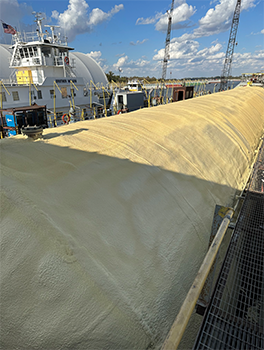
Top side of the first tank after the application of closed-cell spray foam
The AirTight crew consists of Derrick McKinley (Supervisor), Jeremy Himmel (Owner), and Wesley Tuggle (Lead sprayer). Before they arrived at the Mississippi Marine shipyard in Greenville Mississippi, the Marine Corporation prepped the tanks by sandblasting and priming them. AirTight then arrived in their rig which carries PMC PH-25 proportioners. As safety is always a priority, they double-checked their PPE before they got to work.
The biggest challenge on these tanks was how they were suspended in the hull of a barge. The crew had to make sure they were tied off while spraying the upper sides of the tanks because it was nearly a 60-foot fall if one was to slip off the side. The wind was also an issue for the crew, but wind screens assisted them with that. They applied 2" of BASF SKYTITE closed-cell roofing foam working in sections with wide full passes.
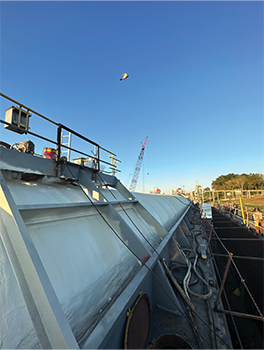
After the application was completed, the crossover platforms were reinstalled
The AirTight crew completed the job in three days and were contracted solely to come in and spray the foam. Once they had applied it, Mississippi Marine completed the tanks by applying a silicone coating over the SPF as coatings are one of their main jobs in restoring barges and boats at Mississippi Marine. “The client was very happy with the job, and it all went smoothly and on time. We are looking forward to working together in the future with Southern Devall, Randy Gilchrest, and Mississippi Marine,” said Himmel.
AirTight Insulation of Mississippi started as a small company. There have been many ups and downs as with any spray foam business, but they have given their all on every job or project to go above and beyond the customers’ expectations. They are humbled by the opportunities presented in the last several years and are looking forward to serving Mississippi Marine with their spray foam needs for many years to come. Himmel ends the interview by saying, “We love new challenges like these tanks, and we also appreciate our bread-and-butter residential applications that keep us busy from day to day.”
For use by SprayFoamMagazine.com & Spray Foam Magazine
Disqus website name not provided.



